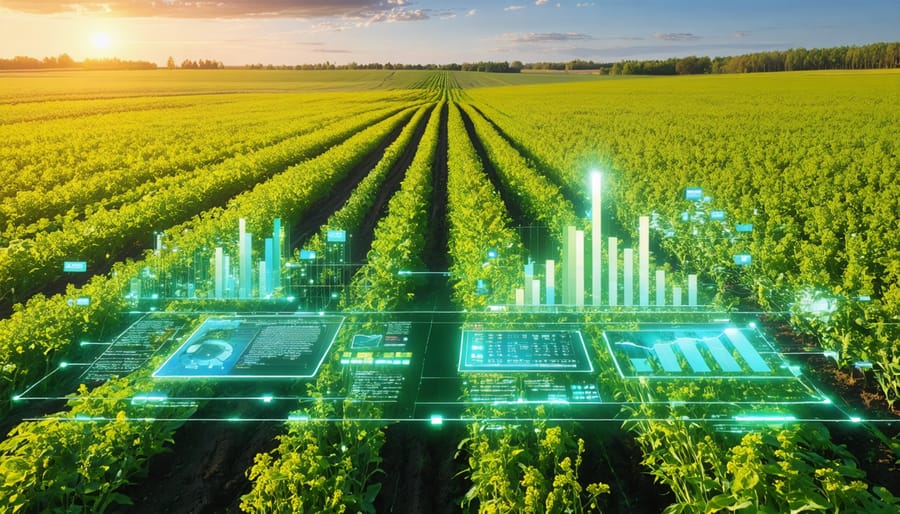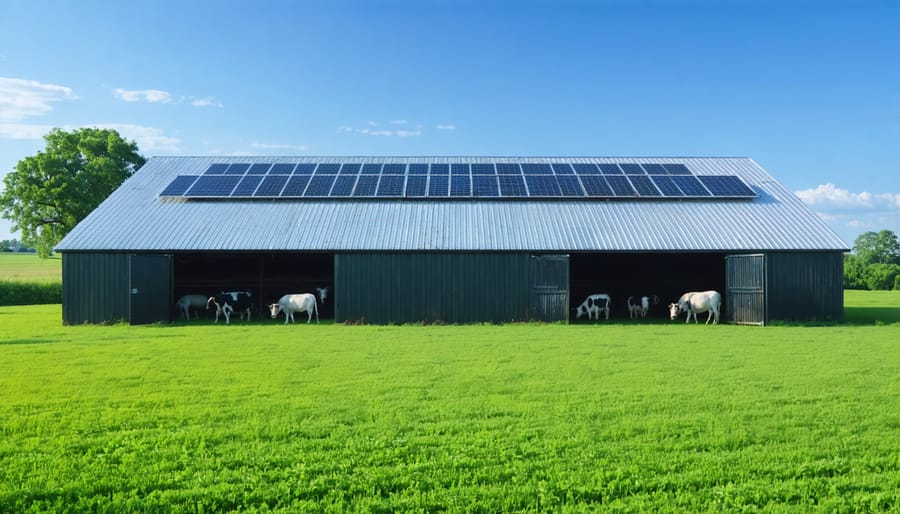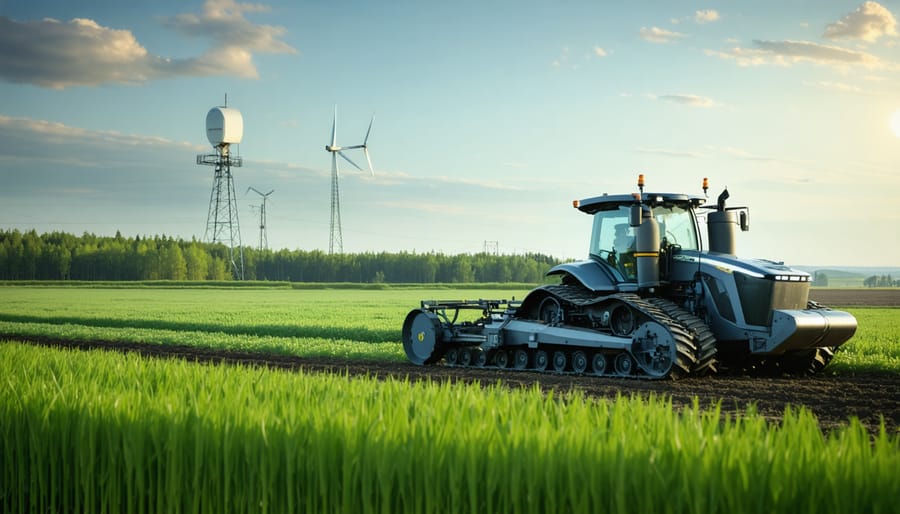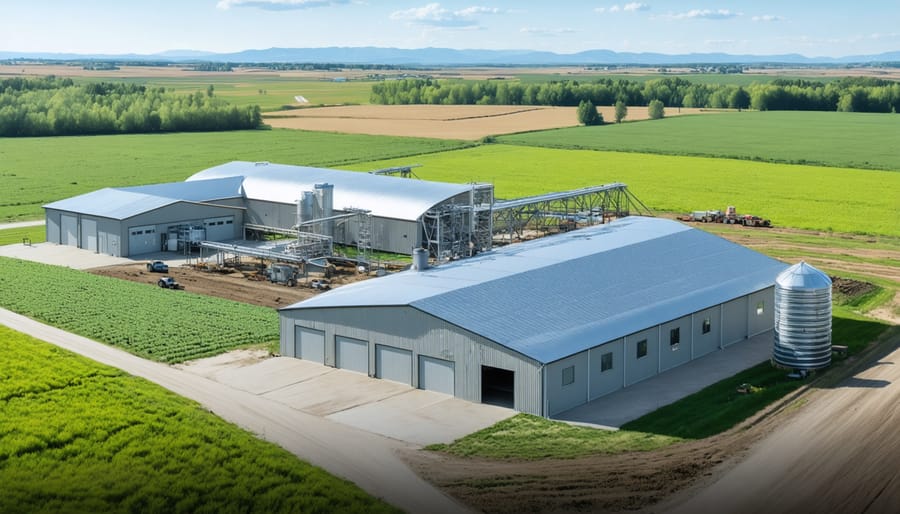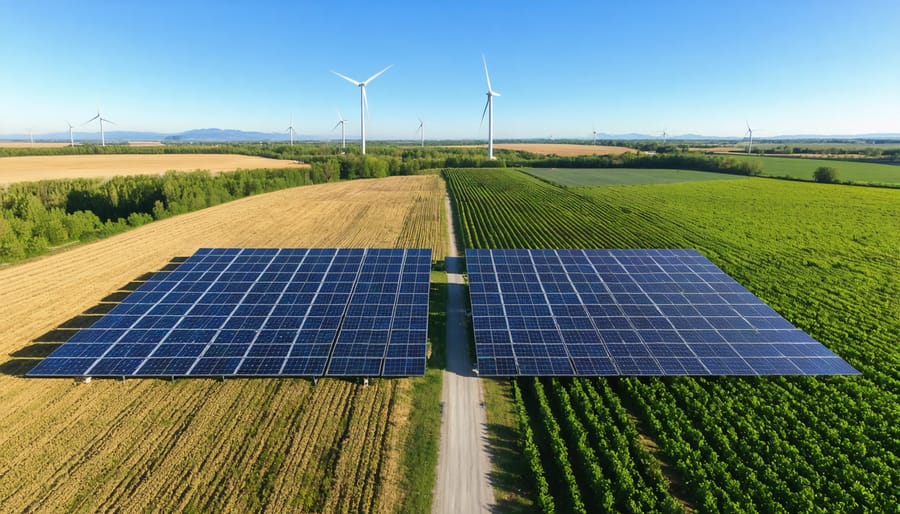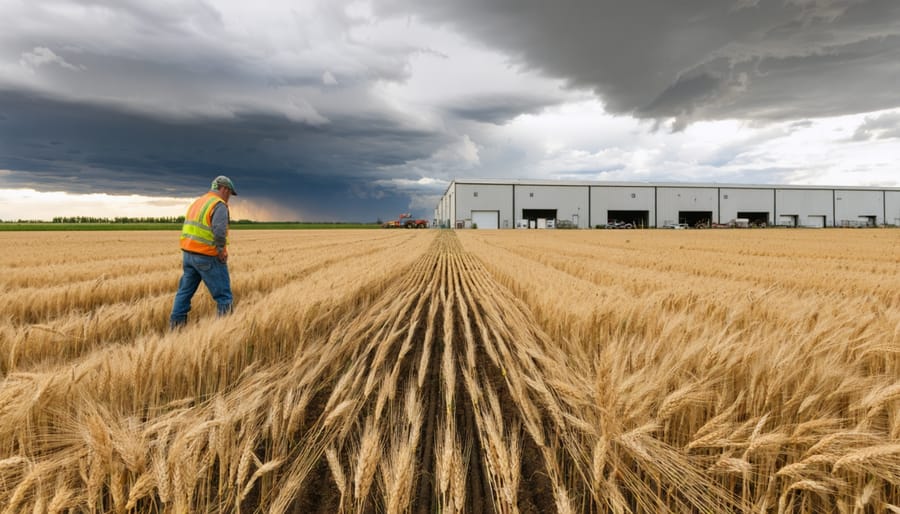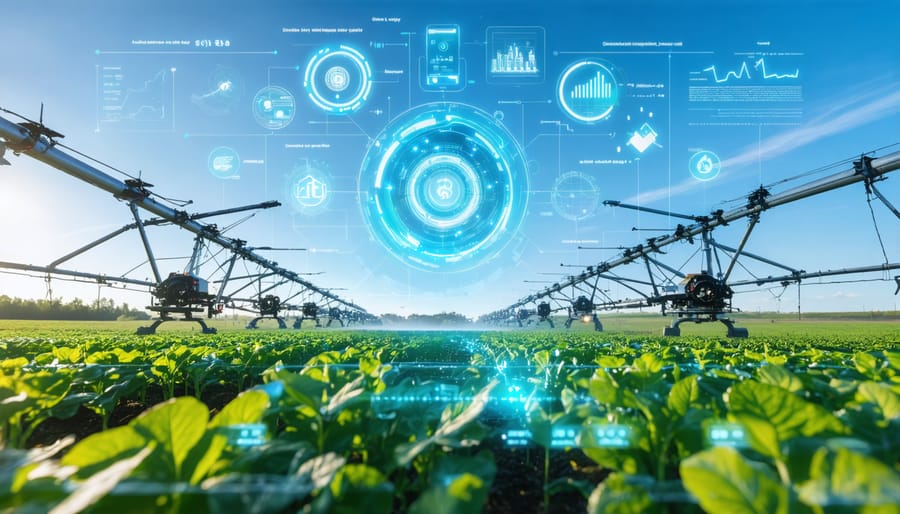Transform your farm’s productivity with smart soil moisture sensors – the game-changing technology that’s revolutionizing Canadian agriculture. These precision devices deliver real-time soil moisture data directly to your smartphone, enabling data-driven irrigation decisions that can reduce water usage by up to 30% while optimizing crop yields.
Across Alberta’s diverse agricultural landscape, from Medicine Hat’s dry prairies to Edmonton’s rich croplands, farmers are reporting 15-25% increases in crop yields after implementing smart moisture monitoring systems. Beyond simple moisture readings, modern sensors track temperature, nutrient levels, and soil electrical conductivity, providing a comprehensive view of soil health that was previously impossible to achieve.
As climate variability continues to challenge traditional farming practices, these intelligent sensors serve as your field’s early warning system. Whether you’re managing a small market garden or operating a large-scale grain operation, accurate soil moisture data helps protect your investment and maximize returns while conserving precious water resources. The technology’s proven success in Canadian agriculture has made it an essential tool for sustainable farming in our unique climate conditions.
How Smart Soil Moisture Sensors Transform Alberta Farms
Real-Time Moisture Data at Your Fingertips
Gone are the days of walking your fields to check soil conditions manually. Today’s smart soil moisture sensors deliver precise, real-time data directly to your smartphone or computer. These innovative devices continuously monitor moisture levels throughout your soil profile, typically from 10 to 100 centimetres deep, giving you a complete picture of your field’s water status.
The sensors transmit data through wireless networks, updating readings every 15-30 minutes. Through user-friendly mobile apps or web platforms, you can access detailed moisture information, historical trends, and customized alerts from anywhere – whether you’re in the combine, at home, or visiting the local coffee shop.
Many Alberta farmers have found particular value in the notification features. When soil moisture drops below optimal levels for their specific crops, they receive instant alerts, allowing for timely irrigation decisions. This real-time monitoring has helped local producers reduce water usage by up to 30% while maintaining or improving crop yields.
The data is presented in easy-to-understand graphs and charts, making it simple to track changes over time and plan irrigation schedules accordingly. Most systems also integrate weather forecasts, helping you make informed decisions about water management based on upcoming conditions.
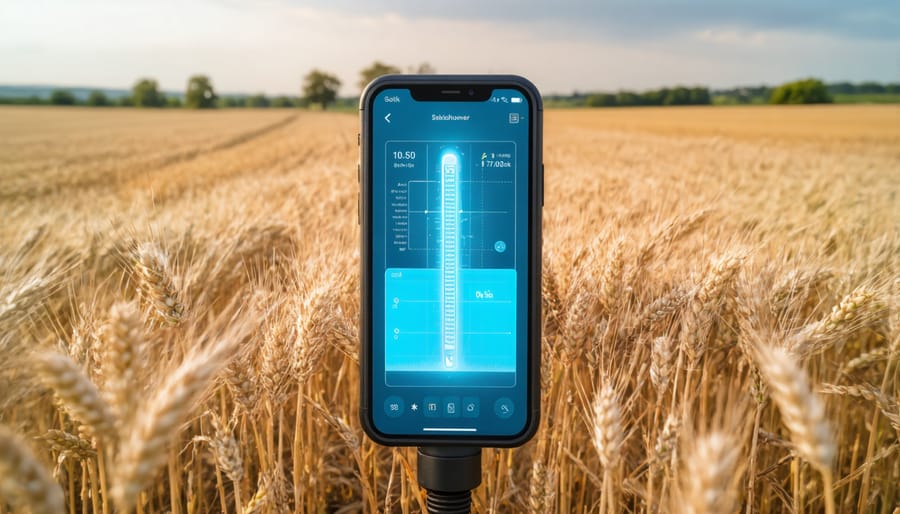
Beyond Basic Moisture Reading
Modern smart soil moisture sensors go far beyond simple moisture readings, integrating seamlessly with smart water systems to provide comprehensive field monitoring. These advanced sensors measure soil temperature, helping farmers anticipate frost risks and optimal planting times. Many models now include electrical conductivity sensors that assess nutrient levels, giving real-time insights into soil health.
The IoT capabilities allow farmers to monitor their fields remotely through smartphone apps, receiving instant alerts when conditions fall outside optimal ranges. In Southern Alberta, farmers are using these multi-parameter sensors to reduce water usage by 30% while maintaining crop yields. The sensors can be networked across large areas, creating detailed soil health maps that help identify problem zones and optimize resource allocation.
Temperature and nutrient data, combined with moisture readings, provide a complete picture of growing conditions. This integrated approach helps farmers make informed decisions about irrigation timing, fertilizer application, and crop rotation, leading to more sustainable and profitable farming practices.
Installation and Placement Strategies
Strategic Positioning for Different Soil Types
Alberta’s diverse soil types require strategic placement of soil moisture sensors for optimal readings and effective soil health management. For heavy clay soils common in the Peace Region, position sensors at multiple depths – typically at 15 cm, 30 cm, and 60 cm – to account for slower water movement. Space sensors 50-75 metres apart in uniform field sections for comprehensive coverage.
In sandy loam soils prevalent in Southern Alberta, place sensors closer together (30-50 metres apart) due to faster drainage patterns. Install sensors at shallower depths, focusing on the 10-40 cm range where most root activity occurs. For these soil types, consider adding an extra sensor near the surface to detect rapid moisture changes.
Black Chernozemic soils, found in Central Alberta, benefit from a balanced approach. Place sensors at 20 cm intervals down to 60 cm, with horizontal spacing of 40-60 metres. These rich soils hold moisture well, so focus sensor placement in areas representing the field’s average conditions.
For variable soils or rolling terrain, identify management zones based on soil texture and topography. Install at least one sensor array in each distinct zone, prioritizing areas that historically show moisture stress. Remember to avoid low spots where water pools and high points where moisture quickly dissipates.
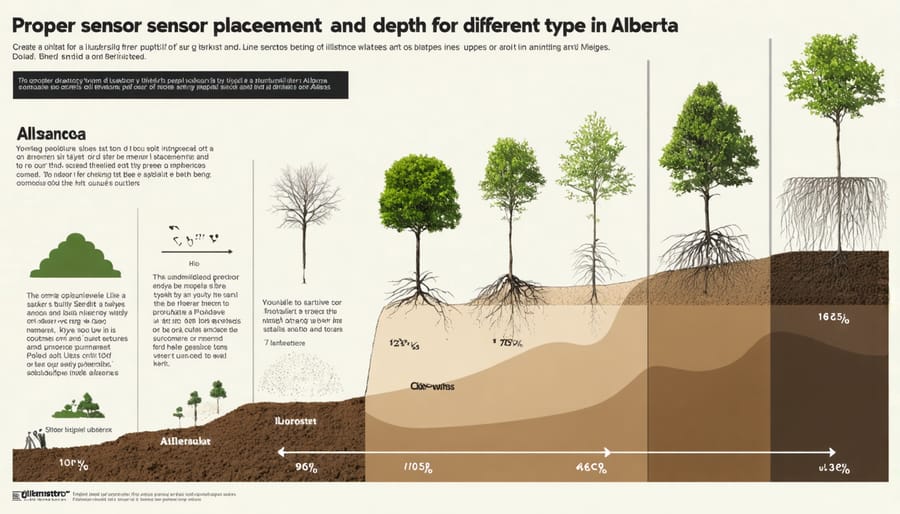
Installation Best Practices
Proper installation of your smart soil moisture sensor is crucial for accurate readings and long-term performance. Start by selecting strategic locations in your field, focusing on areas with varying soil types and topography. For most Alberta farms, we recommend installing sensors at 15 cm, 30 cm, and 60 cm depths to monitor the entire root zone.
Before installation, calibrate your sensor according to your specific soil type. Sandy loam, common in central Alberta, will require different calibration settings than heavy clay soils found in other regions. Dig a hole to the desired depth, keeping the soil structure as undisturbed as possible. Place the sensor prongs horizontally into the undisturbed soil face, ensuring complete contact between the sensor and soil.
For maintenance, inspect sensors monthly during the growing season. Clean any debris from the sensor body and check for signs of corrosion or damage. Replace protective covers if they show wear, especially before winter. Battery life typically extends to 3-5 years, but we recommend checking levels each spring.
To maximize effectiveness, connect your sensor to your farm’s wireless network during installation. Position any external antennas with clear line-of-sight to your base station. For areas with poor connectivity, consider using signal boosters – many Alberta farmers have found success with mesh network systems.
Remember to document your installation points using GPS coordinates and mark them clearly in the field. This helps with future maintenance and ensures consistent data collection year after year.
Making Sense of Sensor Data
Understanding Your Readings
Understanding your soil moisture sensor readings is like learning a new language that your land speaks. For Alberta farmers, typical readings range from 0% (bone dry) to 100% (fully saturated), but the sweet spot usually lies between 20% and 60%, depending on your crop type and soil composition.
Pay attention to daily patterns – readings taken early morning versus late afternoon can vary significantly. Morning readings tend to be higher due to overnight condensation and reduced evaporation. Create a baseline by recording measurements at the same time each day for at least two weeks during your growing season.
Look for trends rather than isolated readings. A steady decline might indicate insufficient irrigation, while sudden spikes could signal irrigation system issues or unexpected precipitation. Many Alberta farmers find that combining sensor data with weather forecasts helps them make more informed decisions about irrigation timing.
Remember that different soil types hold moisture differently. Clay soils might show higher readings than sandy soils, even when plants have similar water availability. Consider installing multiple sensors across your field to account for soil variations and create a more comprehensive moisture map of your land.
For best results, document your readings alongside crop performance observations. This practice helps build a valuable database for future seasons and improves your understanding of your specific field conditions.
Turning Data into Action
Smart soil moisture sensors transform raw data into actionable insights that drive informed decision-making on Canadian farms. By monitoring moisture levels across different soil depths, farmers can precisely determine when and how much to irrigate, leading to water savings of up to 30% while maintaining optimal crop health.
For example, Alberta farmer Mike Thompson uses sensor data to adjust irrigation schedules based on real-time soil conditions. “The sensors helped me reduce water usage and prevent over-irrigation during our wet spring season,” Thompson notes. This approach aligns with modern climate-ready farming practices and has resulted in significant cost savings.
The sensor data also helps identify soil moisture patterns and trends over time. Farmers can use this information to:
– Schedule irrigation during optimal times of day
– Adjust water application rates based on crop growth stages
– Detect potential equipment issues early
– Plan fertilizer applications for maximum effectiveness
– Document water usage for regulatory compliance
By combining sensor data with weather forecasts and crop requirements, farmers can develop precise irrigation strategies that promote sustainable water management while maximizing yield potential. This data-driven approach has become essential for modern Canadian agriculture, especially in regions facing increasing weather variability.
Real Success Stories from Alberta Farms
Water Conservation Success
Alberta farmers implementing smart soil moisture sensors have reported remarkable water savings while maintaining or even improving their crop yields. A recent study conducted across 15 farms in Southern Alberta showed an average reduction in water usage of 30% during the 2022 growing season.
Take the case of Sarah Thompson, a third-generation farmer from Lethbridge, who installed a network of moisture sensors across her 800-hectare canola field. “We saved approximately 2.5 million litres of water in just one season,” Thompson shares. “The sensors helped us understand exactly when to irrigate and how much water our crops actually needed.”
The precision these sensors provide has proven particularly valuable during drought conditions. In Medicine Hat, farmer Mike Collins credits his sensor system for helping him achieve a 15% increase in wheat yield while reducing irrigation costs by 25%. “The sensors showed us that we were actually overwatering certain sections of our field,” Collins explains. “Now we’re more efficient with our resources.”
Local agricultural extension offices report that farms using smart moisture sensors typically see returns on their investment within two growing seasons through reduced water bills and improved crop quality. The technology has been especially effective when integrated with existing irrigation systems, allowing for automated adjustments based on real-time soil moisture data.
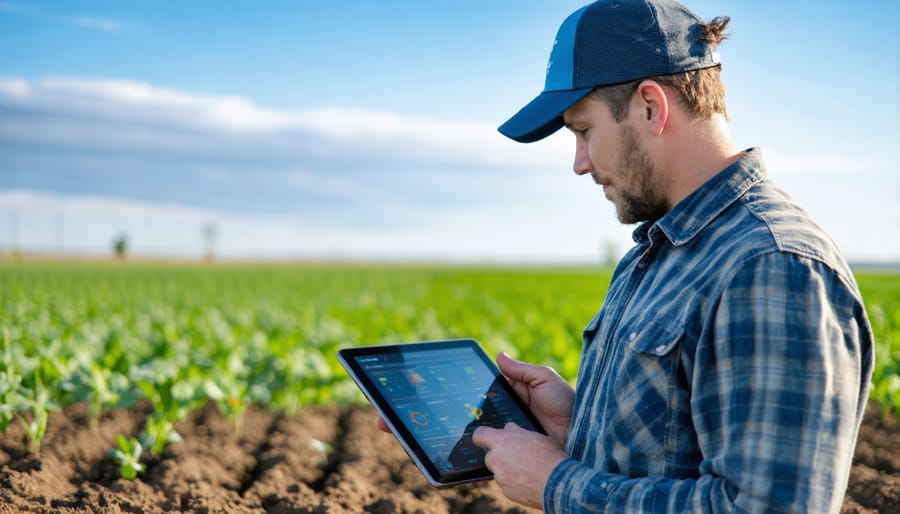
Precision Agriculture in Action
Smart soil moisture sensors work best when integrated with other smart farming technologies, creating a comprehensive approach to precision agriculture. Here in Alberta, farmers are combining moisture sensors with weather stations, automated irrigation systems, and crop monitoring tools to maximize efficiency.
For example, the Marshall family farm near Lethbridge uses moisture sensors alongside satellite imagery and yield mapping to make data-driven decisions. Their integrated system allows them to adjust irrigation schedules based on real-time soil conditions while considering weather forecasts and crop health data.
Variable-rate irrigation has become increasingly popular among Prairie farmers, with moisture sensors serving as the foundation for precise water application. By connecting these sensors to automated systems, farmers can create irrigation zones that receive exactly the right amount of water based on soil conditions and crop requirements.
The key to success lies in proper calibration and regular monitoring. Many Alberta farmers are now part of local agricultural technology groups, sharing their experiences and best practices. These community-driven initiatives have shown that farms using integrated sensor systems typically reduce water usage by 20-30% while maintaining or improving crop yields.
Remember to regularly check and maintain all connected devices and ensure your sensor data is properly feeding into your farm management software for the best results.
Cost Benefits and ROI Analysis
Installing smart soil moisture sensors offers significant financial returns for Canadian farmers, with most seeing a full return on investment within 1-2 growing seasons. Based on data from Alberta Agriculture, farmers using these systems typically reduce irrigation costs by 25-30% while maintaining or improving crop yields.
For a 160-acre field, the initial investment ranges from $3,000 to $8,000, depending on the number of sensors and system complexity. However, the annual water savings alone can reach $2,500-$4,000, while reduced energy costs for pumping add another $800-$1,200 in savings. Factor in labour savings of approximately 15-20 hours per month during peak season, and the economic benefits become even more apparent.
Real-world success stories from Lethbridge County show farmers cutting their water usage by up to 40% while increasing yields by 10-15% through more precise irrigation timing. Additional benefits include reduced fertilizer leaching and lower fuel costs for equipment operation.
Many Canadian agricultural grants and incentives are available to offset initial costs. The Canadian Agricultural Partnership offers funding of up to 30% for precision agriculture technology, making the investment more accessible. When considering maintenance costs of roughly $200-$400 annually, the long-term savings still provide compelling value for most operations.
For smaller farms, starting with a basic system and expanding based on results can help manage upfront costs while still capturing significant benefits.
Smart soil moisture sensors represent a significant step forward in modern Canadian agriculture, offering farmers across Alberta and beyond the tools they need to optimize their water usage and improve crop yields. By adopting these innovative devices, farmers have reported water savings of up to 30% while maintaining or even increasing their productivity. The real-time data and insights provided by these sensors enable more informed decision-making, helping our agricultural community stay resilient in the face of changing climate patterns.
The investment in smart soil moisture sensors pays dividends not just in water conservation but also in reduced labour costs and improved crop health. As we’ve seen from successful implementations across the Prairie provinces, these sensors have become valuable allies in sustainable farming practices. They’re particularly effective when integrated with existing irrigation systems, providing a practical pathway to precision agriculture that’s accessible to farms of all sizes.
For those considering the adoption of smart soil moisture sensors, the growing network of agricultural technology experts and fellow farmers across Canada offers valuable support and experience-sharing opportunities. The time is right to embrace this technology and join the movement toward more efficient, sustainable farming practices.

